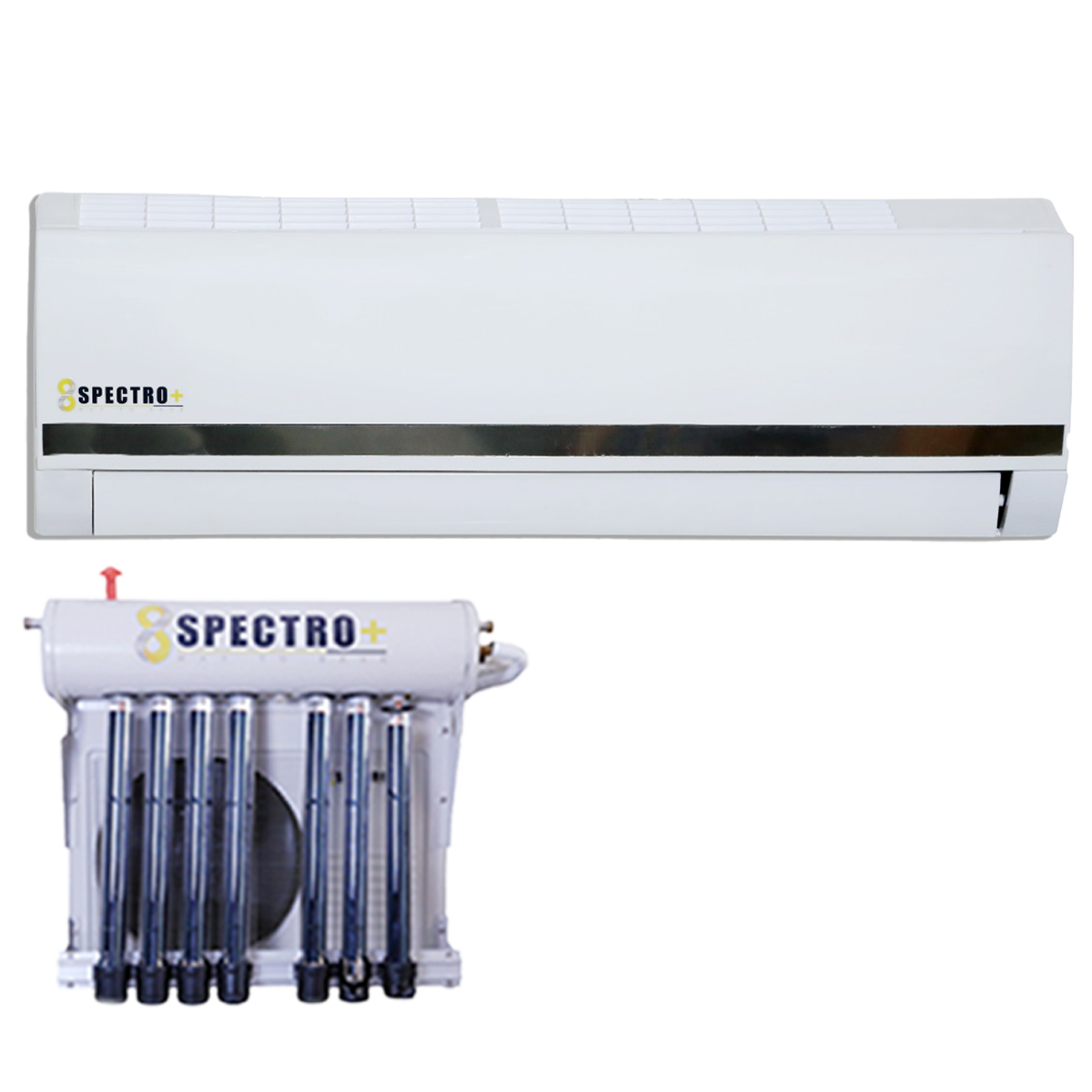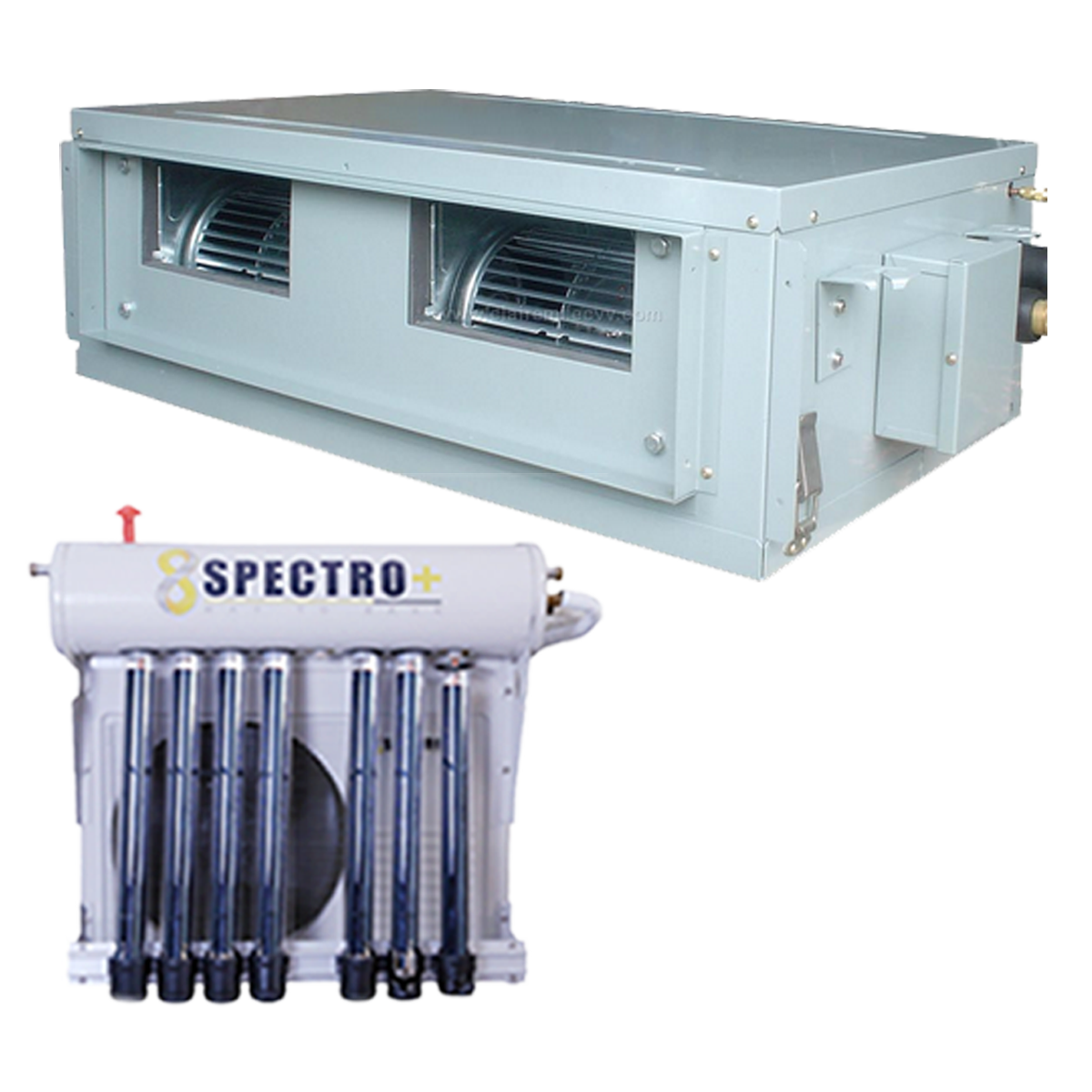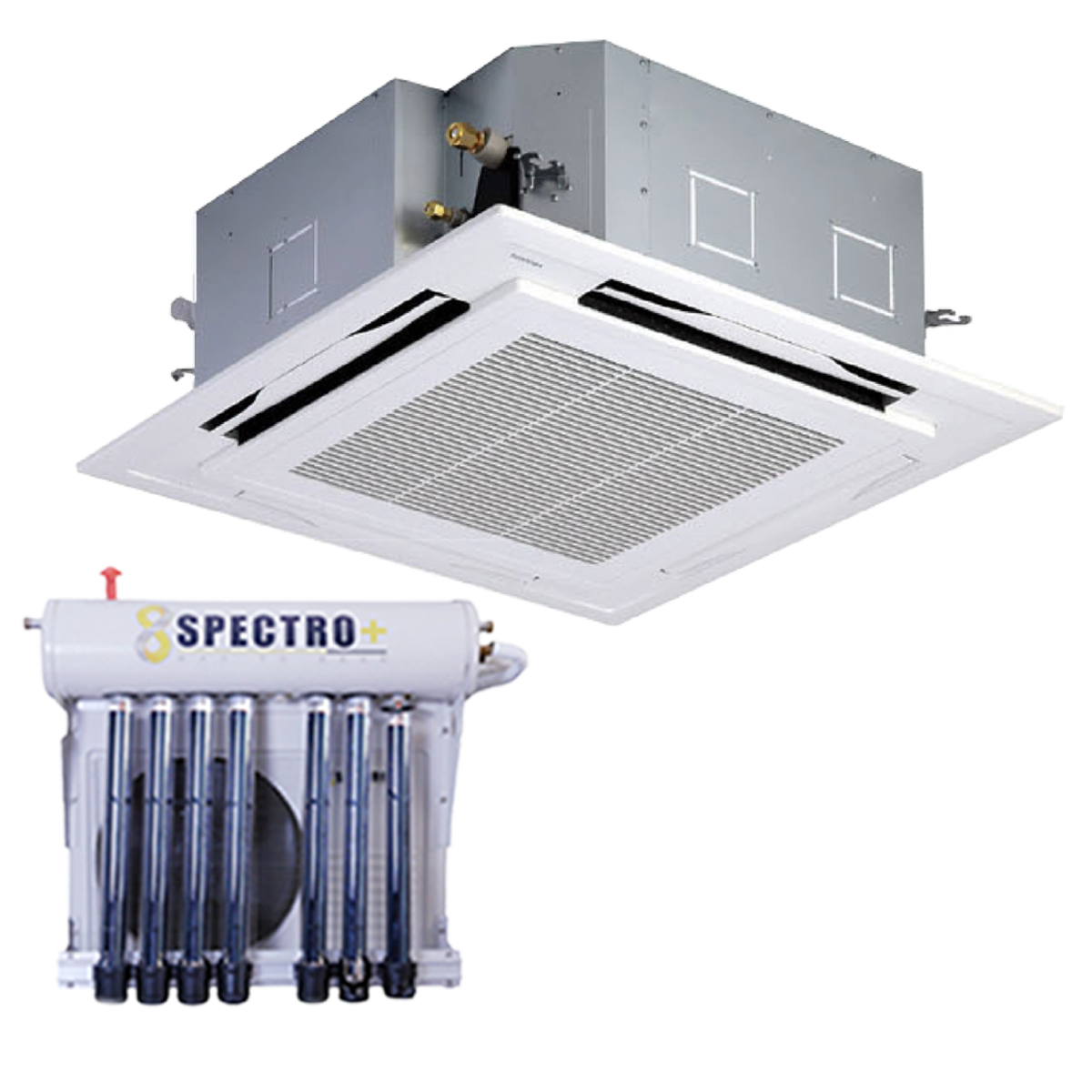Solar Thermal Hybrid Air Conditioner
Main components of Spectro+ Solar Thermal Hybrid Air Conditioner:
- Indoor unit
- Outdoor unit (compressor, Thermal kit)
How Spectro+ Solar Thermal Hybrid Air Conditioner Works:
Spectro+ solar thermal hybrid air conditioner works on triple thermal pipes processing, which is unique among the world air conditioners in terms of high efficiency in cooling and heating and saving electricity consumption by more than the other systems inverter prevalent in the market.
Spectro+ solar thermal hybrid air conditioner is distinguished from the other air conditioners by having a thermal kit on the outdoor unit, which compresses the Freon gas besides the compressor, as the air conditioner needs the compressor only when operating and then completely disconnects and keeps working on thermal kit where the outdoor unit absorbs the surrounding heat and retain.
When the air conditioner is running, Freon gas moves through the copper pipes to the heat preservation tank to compress the gas by heating it.
Spectro+ solar thermal hybrid air conditioner also has a great feature in withstanding high temperatures up to 65C.
Parameters are measured in the rated working state: when cooling outdoor unit dry/wet-bulb temperature 35/24°C, indoor unit dry/wet-bulb 27/19°C; when heating, outdoor unit dry/wet-bulb 7/6°C, indoor dry/wet-bulb 20/15°C. Changes may appear according to a real working state.
When taking water, temp is <65°C. Parameters may change due to product improvement. Please understand that all SPECTRO+ Triple Thermal Solar Air Conditioners Energy Savings is truly based on Environmental Conditions. SPECTRO+ Triple Thermal Solar Air Conditioners are designed with high-pressure thermal heating technology, consisting of compact pressure, thermal siphon, reverse heat valves, dual condensers, dual capillaries, double and triple evaporators, and recycled condenser heat.
The Power of UV- C Light Technology
What is UV-C?
UV-C is part of the ultraviolet light spectrum that is filtered out by the earth’s atmosphere. The “ C” stands for the particular frequency of UV light that kills germs.
Is this new technology?
No. UV-C has been used for over 100 years in various applications to kill germs on surfaces, air, and water. UV-C has been proven to kill up to %99.9 of germs. Many hospitals use UV-C to sanitize.
Why is my indoor air so dirty?
The warmth and moisture found in the HVAC (Heating, Ventilation, and Air
Conditioning) systems of households and office buildings make the perfect breeding ground for airborne molds, microorganisms, and bacteria. These HVAC systems also provide an ideal way to circulate viruses and germs around an entire office building or home in a relatively short time. It is no wonder that each year five to twenty percent of the entire World population develops influenza. This is part of the reason why having a room air purifier is so important.
Thanks to emerging technology, UV-C’s power has been harnessed and is now available for personal use. Recently there have been a number
of applications of UV-C technology on products in the home sanitization market. Some
of the most successful and effective uses of UV-C include: air sanitizers, handheld UV
wands, toothbrush sanitizers, HEPA Air Purifiers and floor care, vacuum cleaners in
particular.
How Does UV-C Work?
Why is UV-C so effective at destroying germs?
UV-C light is highly effective at penetrating thin-walled germs like viruses and bacteria. The light alters the genetic structure of the germ, and they die.
UV-C light is not visible to the unaided eye due to its location on the electromagnetic spectrum. But just because it cannot be seen doesn’t mean it
can’t put up one tough fight against germs, bacteria, viruses, and mold. Thanks to its germicidal wavelength (AKA frequency), UV-C is ideally
located in the spectrum that best inactivates microorganisms and viral air contaminants. When a virus or microorganism comes in contact
with UV-C, its nucleus is penetrated, and its DNA is irreparably damaged, resulting in death or the inability to reproduce and the
spread of unwanted germs! By applying UV-C light, we can do more than just put up a blockade. We can destroy the source of
the problem.





